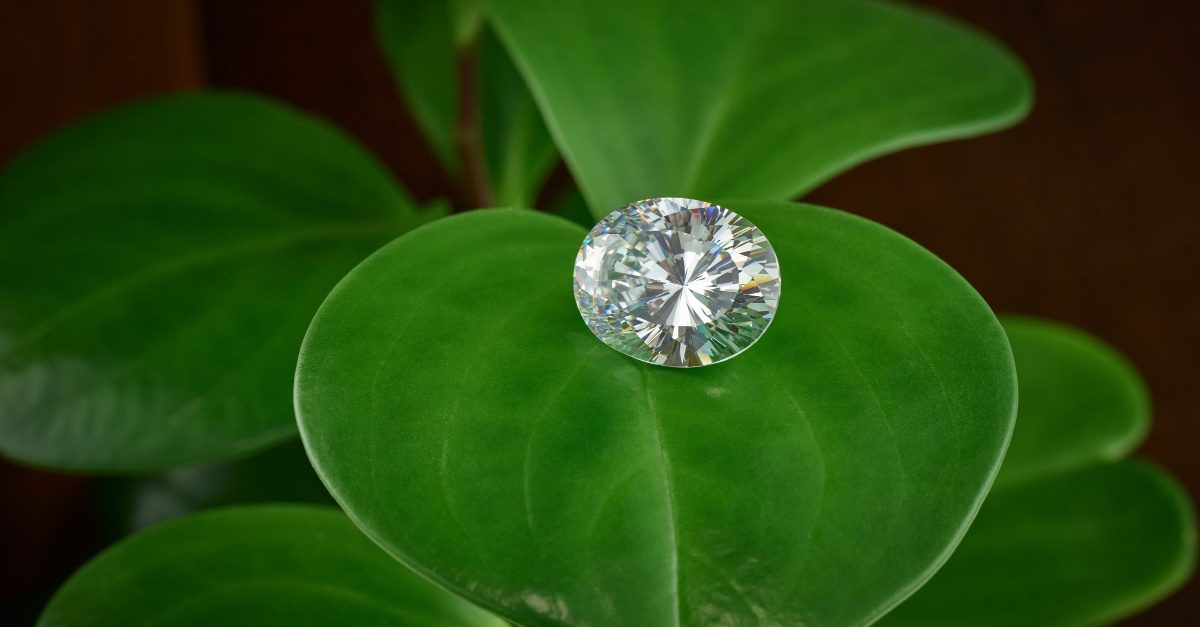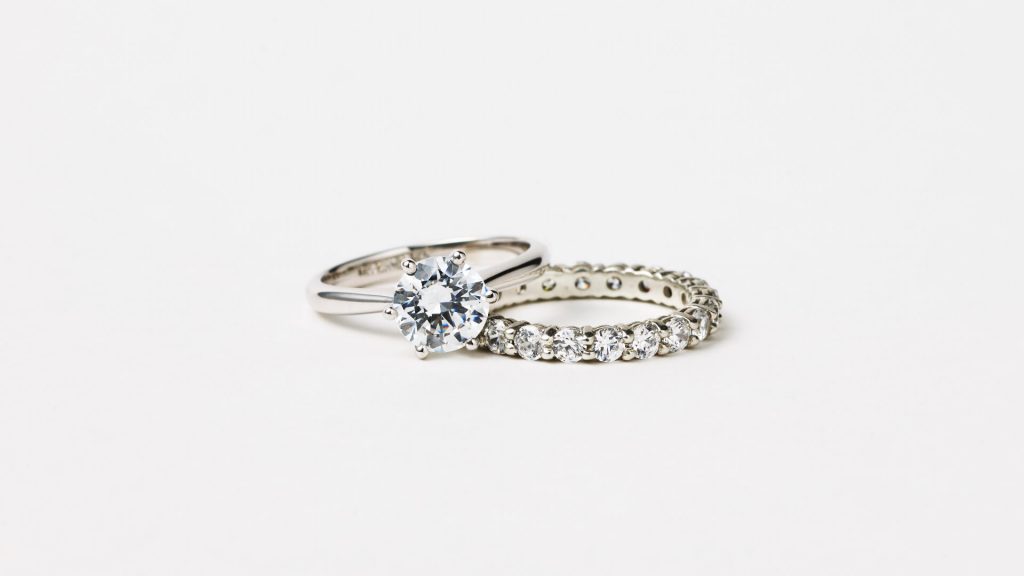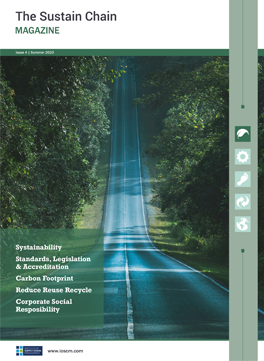
Lab-Grown Diamond Popularity: How It Disrupted Worldwide Supply Chains
Lab-grown diamonds, once a niche curiosity, are a force to be reckoned with, reshaping the diamond industry forever. Due to the way they’re created, they’ve emerged as an ethical, sustainable, and cheaper alternative to their mined counterparts. Let’s explore the reasons for synthetic diamonds’ meteoric rise, the comparison of their production method to mined diamonds, and their far-reaching impact on supply chains worldwide. Read on!
Traditional Diamond Supply Chain
In the traditional diamond supply chain, diamonds are sourced from deep within the Earth through mining. They’re extracted from the Earth’s crust, often in remote and challenging environments. These diamonds begin their journey through a complex web of processes before reaching the jewellery stores and adorning people’s fingers, necks, and ears all over the globe.
Traditional diamond mining is infamous for its environmental impact. The process can involve massive open-pit mines, which disrupt ecosystems and can result in deforestation and soil erosion. There have also been ethical concerns related to the working conditions of miners in some regions, often involving child labour and unfair wages.
These concerns have led many consumers to seek alternatives, ultimately paving the way for the rise of lab-grown diamonds.
Lab-Grown vs. Mined Diamonds
Lab-grown and mined diamonds are visually, chemically, and physically identical. The only difference is that the latter has traces of substances like nitrogen, while the former doesn’t. Does this in any way affect the gemstone? Not even a little bit.
Here’s how lab-grown and traditionally mined diamonds differ from each other:
- Origin: Lab grown diamonds are created in controlled environments, while mined diamonds come from the Earth’s crust.
- Time: Lab grown diamonds take weeks to months to cultivate, whereas mined diamonds take millions of years to form.
- Environmental Impact: Lab grown diamonds generally have a smaller environmental footprint, with no giant open-pit mines or ecosystem disruption.
- Ethical Considerations: Lab grown diamonds sidestep the ethical concerns of some mined diamonds, offering a more transparent and ethical option.
Benefits of Lab Grown Diamonds
Lab grown diamonds have several advantages over mined diamonds. These include:
- Ethical Clarity: Lab grown diamonds are often conflict-free, so you can wear your bling with a clear conscience.
- Environmental Friendliness: No earth-shattering mining operations mean a gentler environmental impact.
- Affordability: Lab grown diamonds are more wallet-friendly, making that dream engagement ring more attainable.
- Customisation: Labs can create diamonds in various shapes, sizes, and colours, giving you more options to express your unique style.
Disruptions in Diamond Supply Chains
The surge in lab-grown diamonds has sent shockwaves through the traditional diamond mining industry, prompting these significant changes:
- Impact on Traditional Diamond Mining
Traditional diamond mining involves complex processes, including exploration, extraction, cutting, and distribution. Lab-grown diamonds, on the other hand, streamline the supply chain by eliminating the need for mining and associated processes.
- Changing Customer Preferences
As more consumers choose lab-grown diamonds for their ethical and environmental benefits, the demand for mined diamonds has decreased for the past few years.
Response from Industry Players
Traditional miners have invested in ethical and sustainable mining practices to meet changing consumer expectations. Also, many jewellers now offer lab grown diamonds alongside traditional ones to cater to diverse preferences.
Companies like De Beers have also started producing lab-grown diamonds. These players are expanding their production capabilities and marketing efforts.
As with almost everything else, adaptation and evolution are keys to survival.
Evolution of Diamond Retail
Retailers now offer a mix of lab-grown and mined diamonds to cater to varying customer preferences. Moreover, enhanced transparency in diamond sourcing and certification is becoming the norm.
Retailers are also educating customers about the differences between lab grown and mined diamonds, empowering them to make informed choices.
These shifts in the supply chain dynamics can lead to innovative strategies and redefined roles. Because let’s face it—the industry is too large, the players too powerful for it to go away like what happened to the natural pearl industry.
The Future of Diamonds
What’s on the horizon for lab-grown diamonds? Here’s what experts foresee:
- Market Expansion: Lab grown diamonds are expected to capture a larger share of the diamond market as consumer awareness and acceptance grow.
- Technological Advancements: Continued innovations may lead to larger, higher-quality lab grown diamonds at even more competitive prices.
- Sustainability: Ethical and environmental considerations will become increasingly important, favouring lab grown diamonds.
The traditional mining industry is at a crossroads, and reforms are in the air. Mining companies may face increased pressure to adopt ethical and sustainable mining practices. Stricter regulations could be imposed to minimise the environmental impact of mining operations. Some mining companies may also pivot toward lab grown diamonds to diversify their offerings.
But how will lab grown and mined diamonds coexist in the future supply chain? Two scenarios emerge:
- Coexistence: Both lab grown and mined diamonds may peacefully coexist, with consumers having the freedom to choose based on their preferences and values.
- Competition: Intense rivalry between lab grown and mined diamonds could lead to ongoing market shifts, with one eventually dominating the other.
Whether it’s lab-grown diamonds reaching new heights, traditional mining embracing reforms, or coexisting or competing, the diamond industry is in for a sparkling evolution.
Conclusion
Lab-grown diamonds offer a sustainable and ethical alternative to traditional mining. Consumers are increasingly drawn to them due to their eco-friendly attributes and affordability, signalling a shift in preferences.
Moreover, the changes they’ve effected have profound implications for supply chain management. That’s why companies must adapt to meet consumer demands for transparency and sustainability. However, the future promises a diverse market where lab grown and mined diamonds coexist, providing choices that align with individual values.
Download your free copy of The Sustain Chain Magazine today for more great articles on sustainability, carbon-footprint, recycling, and much more.


